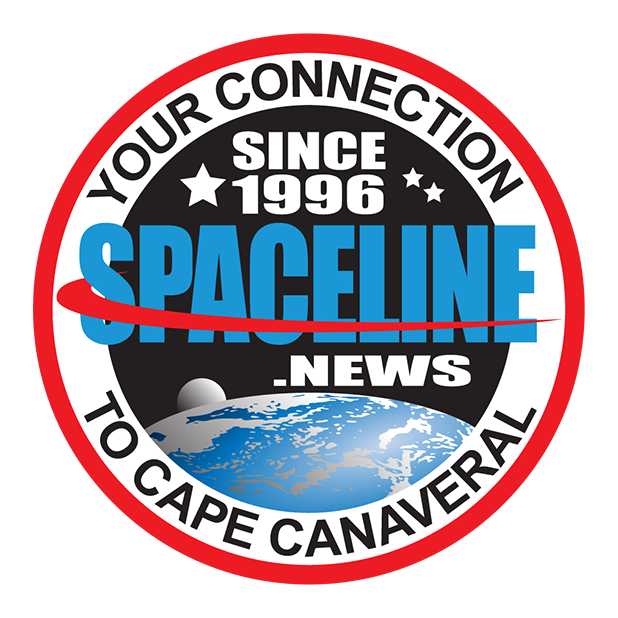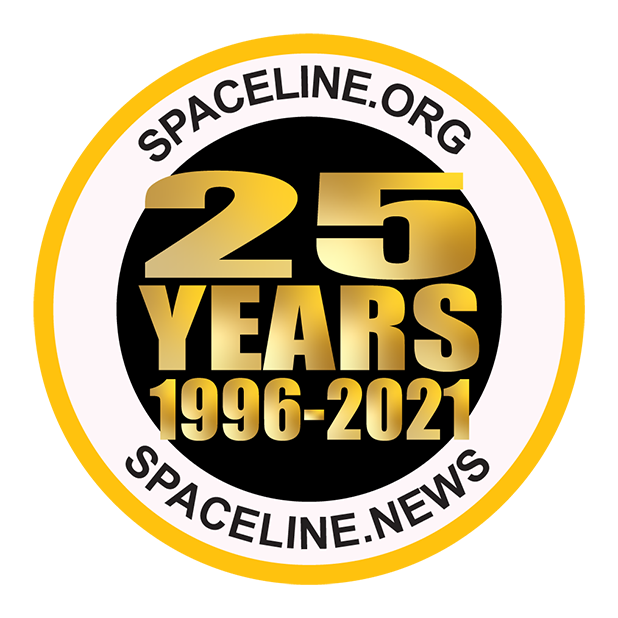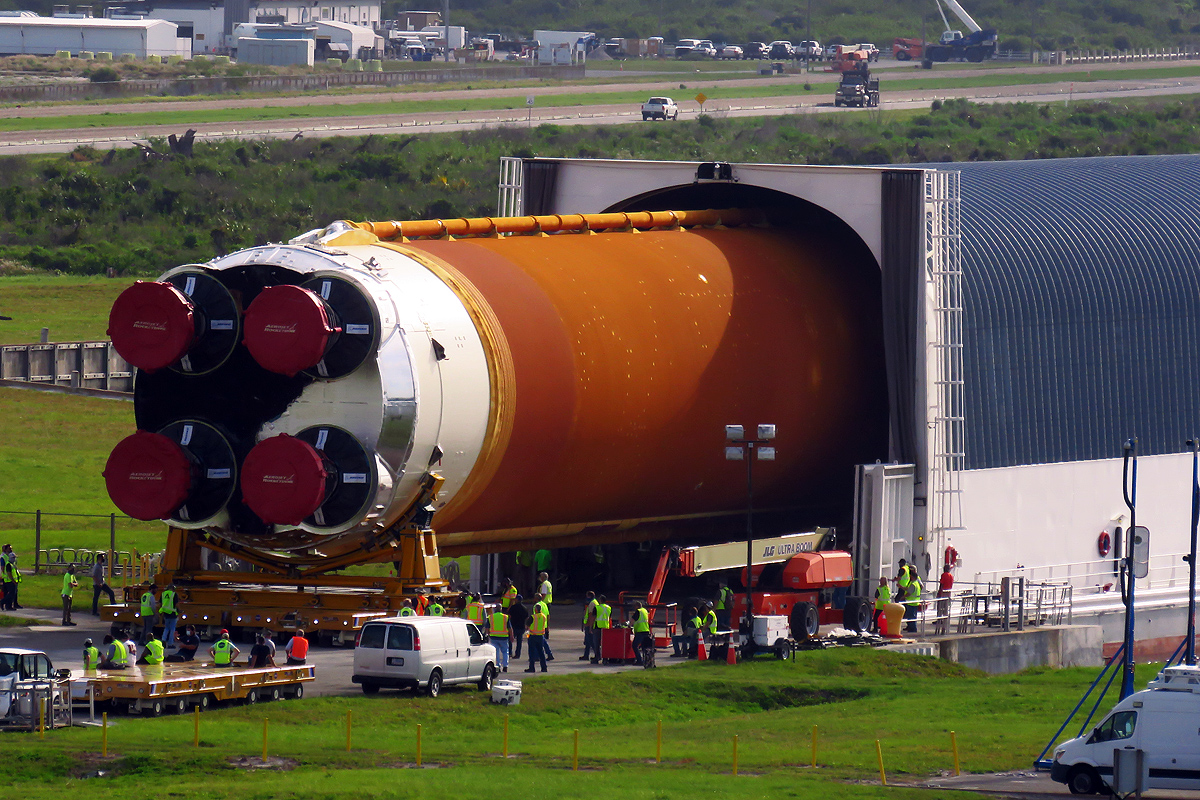
SLS Core Booster Offloads At KSC, Photo Courtesy Carleton Bailie/Spaceline
SLS Core Booster Offloads At KSC
April 29, 2021 | Reported by Cliff Lethbridge
The core booster which will fly in the first Artemis program launch was offloaded from a barge today at the Kennedy Space Center. The core booster will be transported to the Vehicle Assembly Building where twin solid rocket boosters await. The twin solid rocket boosters will be mated to the core booster in preparation for a launch from Launch Pad 39B. The exact launch date has not yet been announced. Here is some background on the Space Launch System and its components, including the core booster.
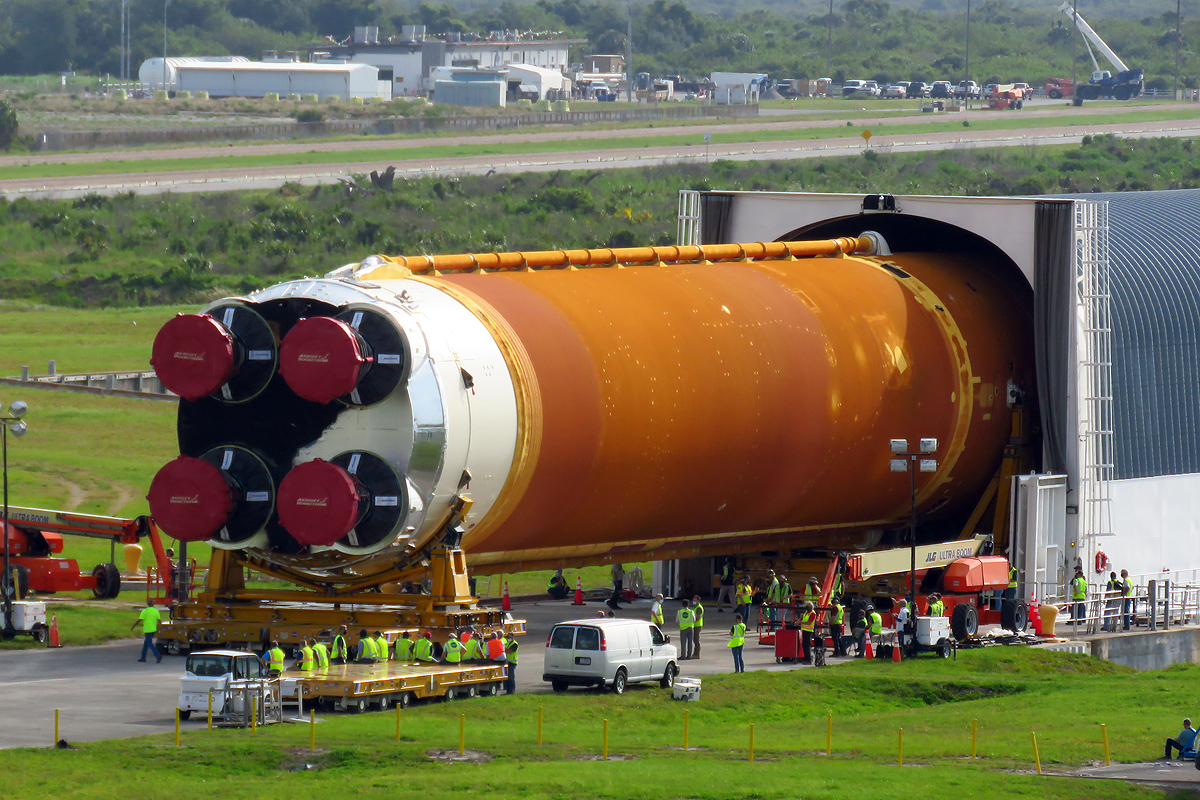
SLS Core Booster Offloads At KSC, Photo Courtesy Carleton Bailie/Spaceline
The NASA Space Launch System (SLS) is a powerful, advanced launch vehicle designed to usher in a new era of human exploration beyond Earth's orbit. With unprecedented power and capabilities, SLS will launch crews in the NASA Orion spacecraft on missions to explore multiple deep-space destinations. Offering more payload mass, volume capability and energy to speed missions through space than any current launch vehicle, SLS is designed to be flexible and evolvable and will open new possibilities for payloads, including robotic scientific missions to destinations like Mars, Saturn and Jupiter.
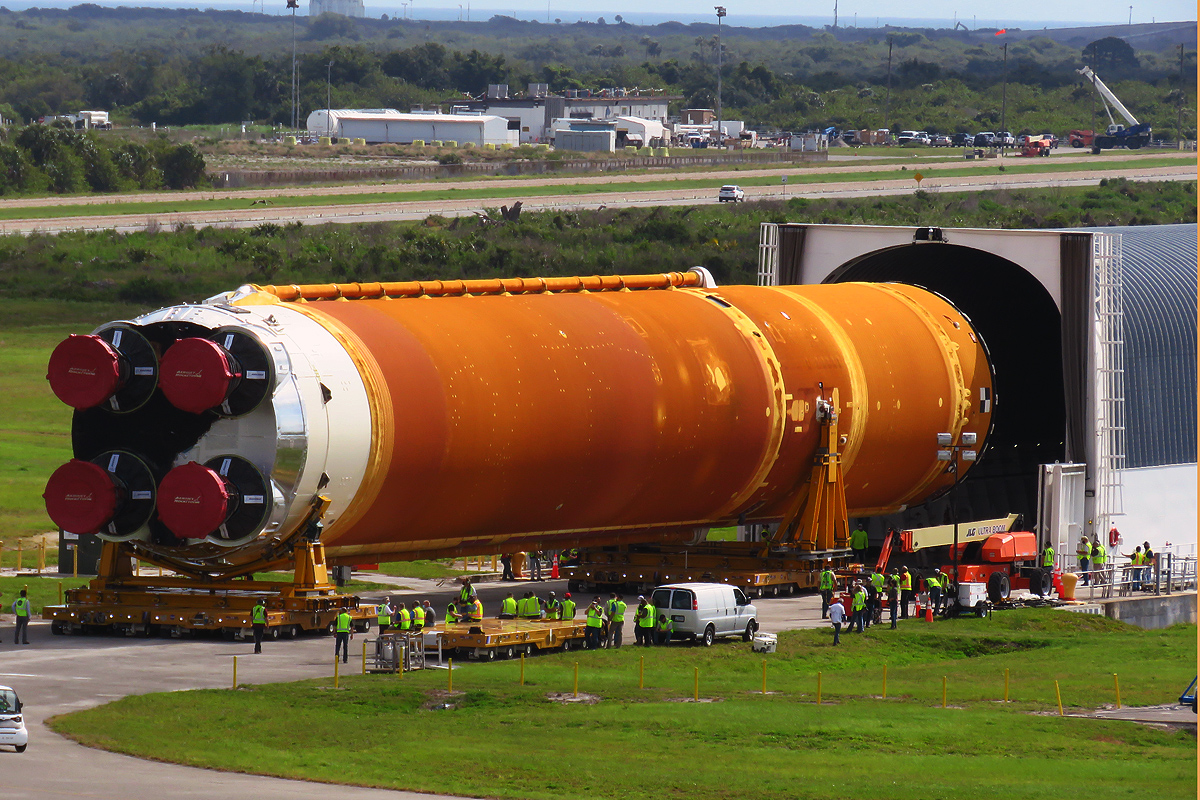
SLS Core Booster Offloads At KSC, Photo Courtesy Carleton Bailie/Spaceline
To fit NASA future needs for deep-space missions, SLS is designed to evolve into increasingly more powerful configurations. The first SLS vehicle, called Block 1, has a 77-ton lift capability. It will be powered by twin five-segment solid rocket boosters and four RS-25 liquid propellant engines. The SLS Block 1 will produce about 8.8 million pounds of thrust at liftoff. It will produce 15 percent more thrust than the Saturn V and at a weight of 5.75 million pounds will carry more than three times the mass of the Space Shuttle. SLS Block 1 will be used to launch an uncrewed Orion spacecraft beyond the Moon and back, then carry a crewed Orion spacecraft the same distance, farther than humans have ever traveled.
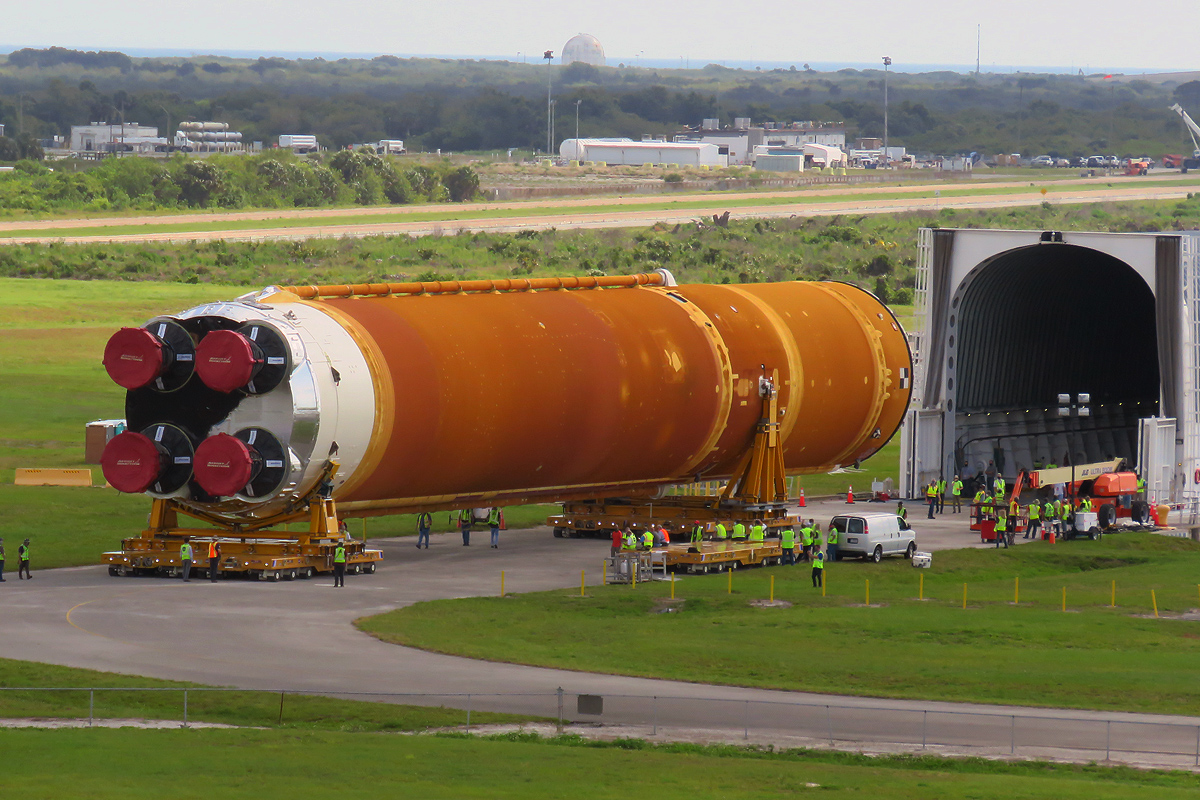
SLS Core Booster Offloads At KSC, Photo Courtesy Carleton Bailie/Spaceline
The SLS Block 1B crewed configuration will be taller than the Saturn V rocket and will be used to launch humans on more ambitious missions beyond the Moon, to the proving ground of space where NASA will test systems needed for the journey to Mars. Utilizing an Exploration Upper Stage, the Block 1B can, in a single launch, carry the Orion spacecraft along with exploration systems like a small deep-space habitat module or science spacecraft. The next evolved configuration, the SLS Block 2, will be the workhorse vehicle for assembling a human mission to Mars. Using improved engines and solid rocket boosters, SLS Block 2 will have a liftoff thrust of about 9.2 million pounds.
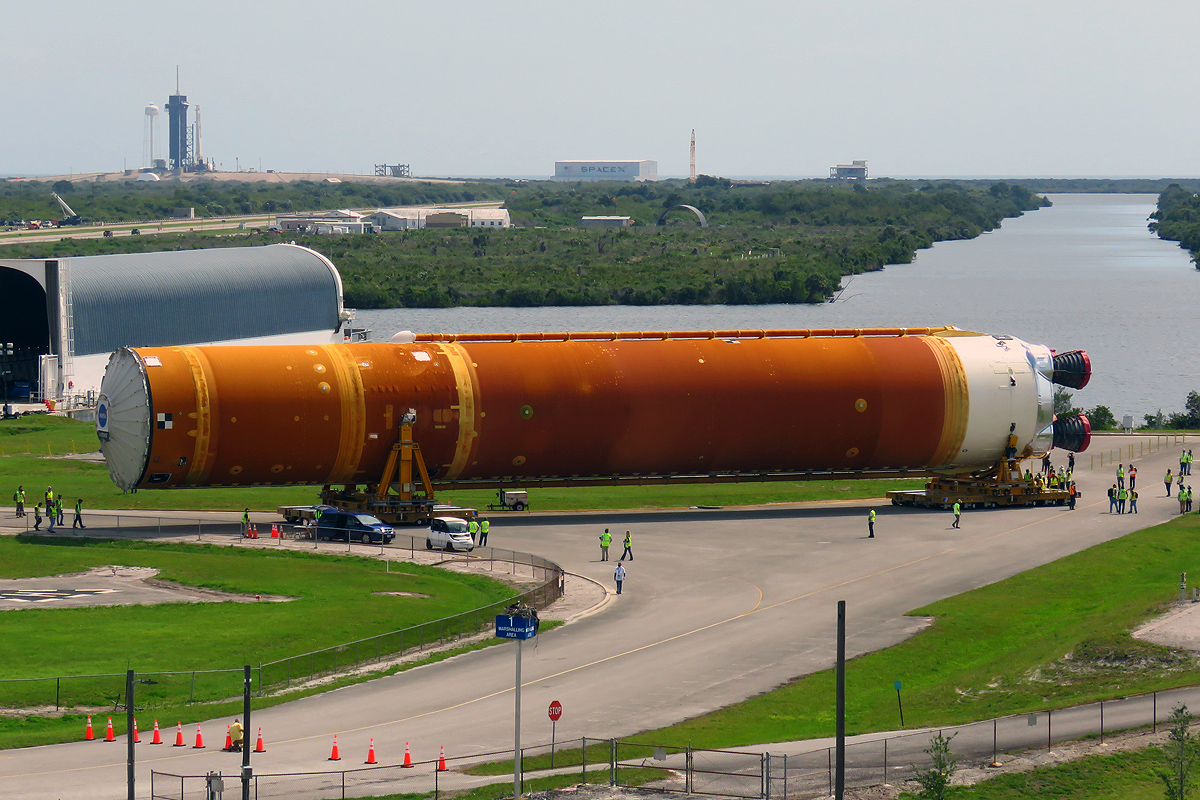
SLS Core Booster Offloads At KSC, Photo Courtesy Carleton Bailie/Spaceline
SLS consists of a core stage, four RS-25 engines, two solid rocket boosters and a variety of payload adapters, fairings and upper stages. The core stage is more than 200 feet tall and 27 feet, seven inches in diameter. It will store more than 730,000 gallons of super-cooled liquid oxygen and liquid hydrogen to feed the engines. Propulsion for the core stage will be provided by the four RS-25 engines, being upgraded from main engines left over from the Space Shuttle program. Improvements to the engines include a new engine controller, nozzle insulation and increased thrust to 418,000 pounds each, up from 395,000 pounds each when used on the Space Shuttle.
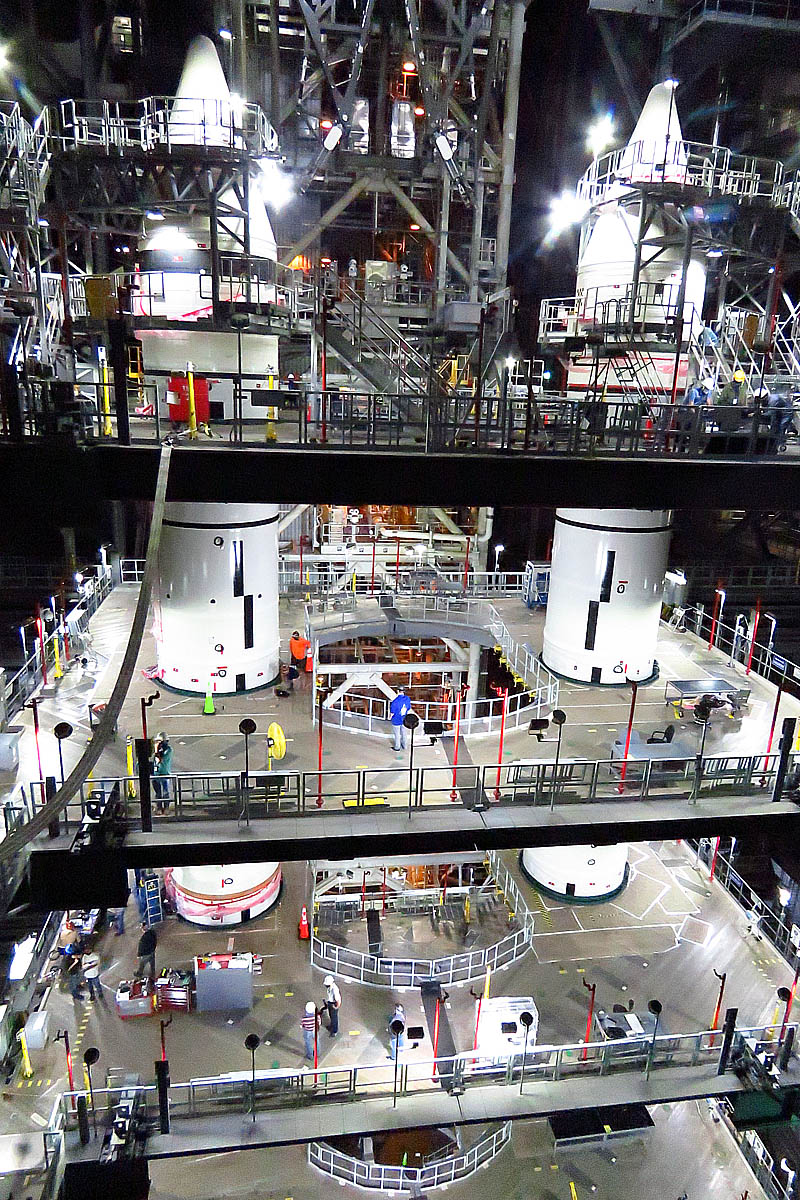
SLS Solid Rocket Boosters Await Core Booster In VAB, Photo Courtesy Carleton Bailie/Spaceline
The twin solid rocket boosters, the most powerful ever built, are derived from the Space Shuttle program. Each weighs 1.6 million pounds and can produce a liftoff thrust of 3.6 million pounds. Performance enhancements over the Space Shuttle version are derived primarily from the addition of a booster segment. The SLS solid rocket boosters employ five segments, up from four segments for the Space Shuttle boosters. This accommodates about 25 percent more fuel for greater thrust and burn time. Other improvements include a new nozzle design, new asbestos-free insulation and liner configuration and new avionics. Unlike the Space Shuttle boosters, the SLS solid rocket boosters will not be recovered. The SLS solid rocket boosters burn polybutadiene acrylonitrile (PBAN) solid fuel.
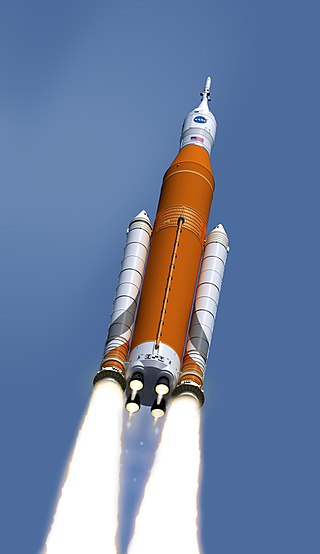
Artist Conception Of SLS In Flight, Photo Courtesy NASA
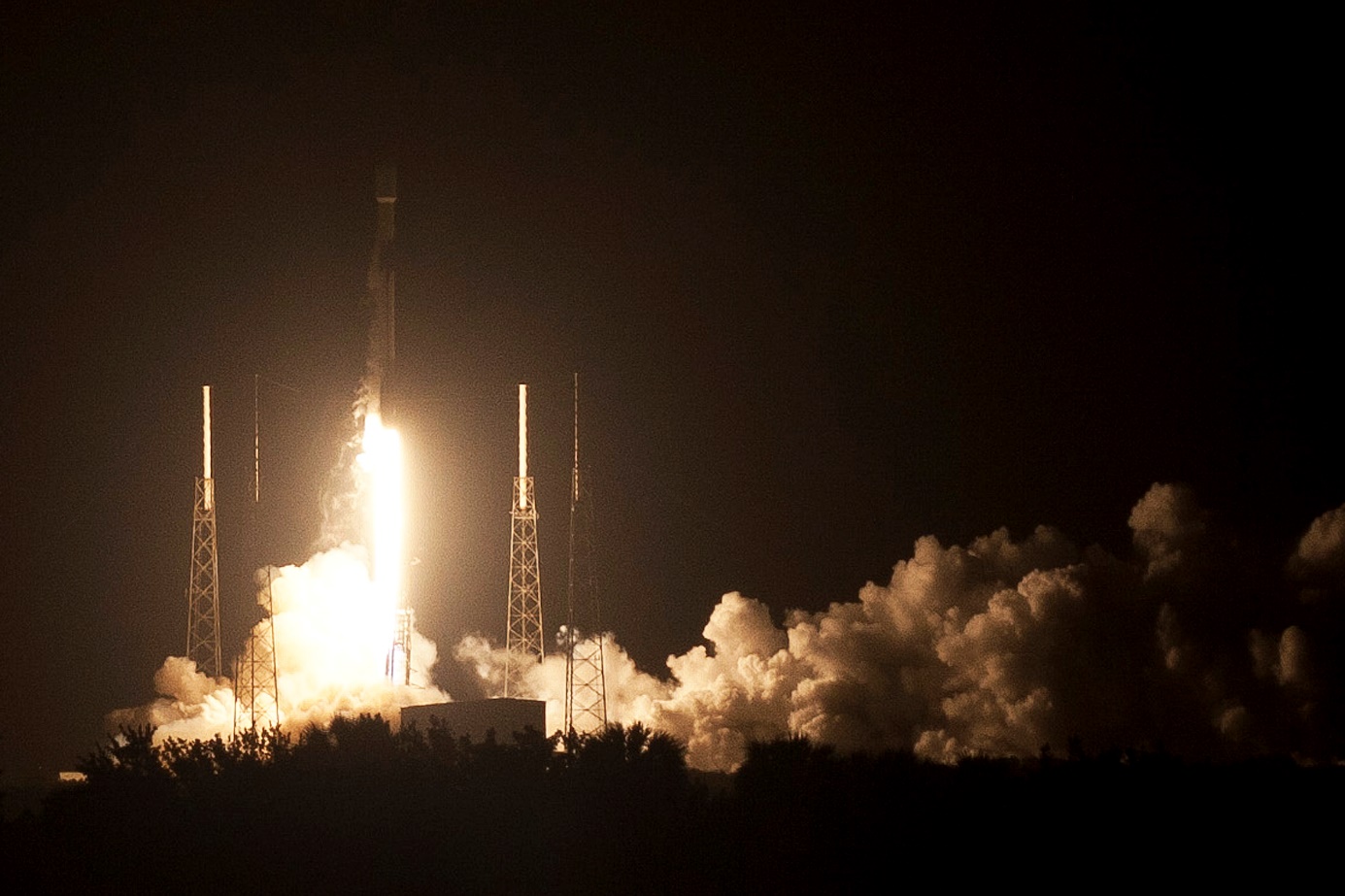
Falcon 9 Starlink V1.0-L24 Launch, Photo Courtesy Carleton Bailie/Spaceline
Falcon 9 Launches 60 More Starlink Satellites
April 28, 2021 | Reported by Cliff Lethbridge
A SpaceX Falcon 9 rocket successfully launched 60 Starlink satellites at 11:44 p.m. EDT today from Launch Pad 40 on Cape Canaveral Space Force Station. The mission, designated Starlink V1.0-L24, was the 25th designated launch of Starlink satellites, bringing the total number launched to date to 1,505 although not all of them are still in orbit. The first stage booster employed today was being flown for the seventh time, having previously supported the GPS III-SV03 mission, the Turksat-5A mission and four Starlink missions. The booster was successfully recovered today with a landing on the "Just Read the Instructions" drone ship positioned on the Atlantic Ocean about 400 miles northeast of Cape Canaveral. Starlink is a SpaceX-owned and operated constellation of broadband Internet satellites intended to provide service for unserved or underserved areas or as an alternative to traditional Internet service providers.
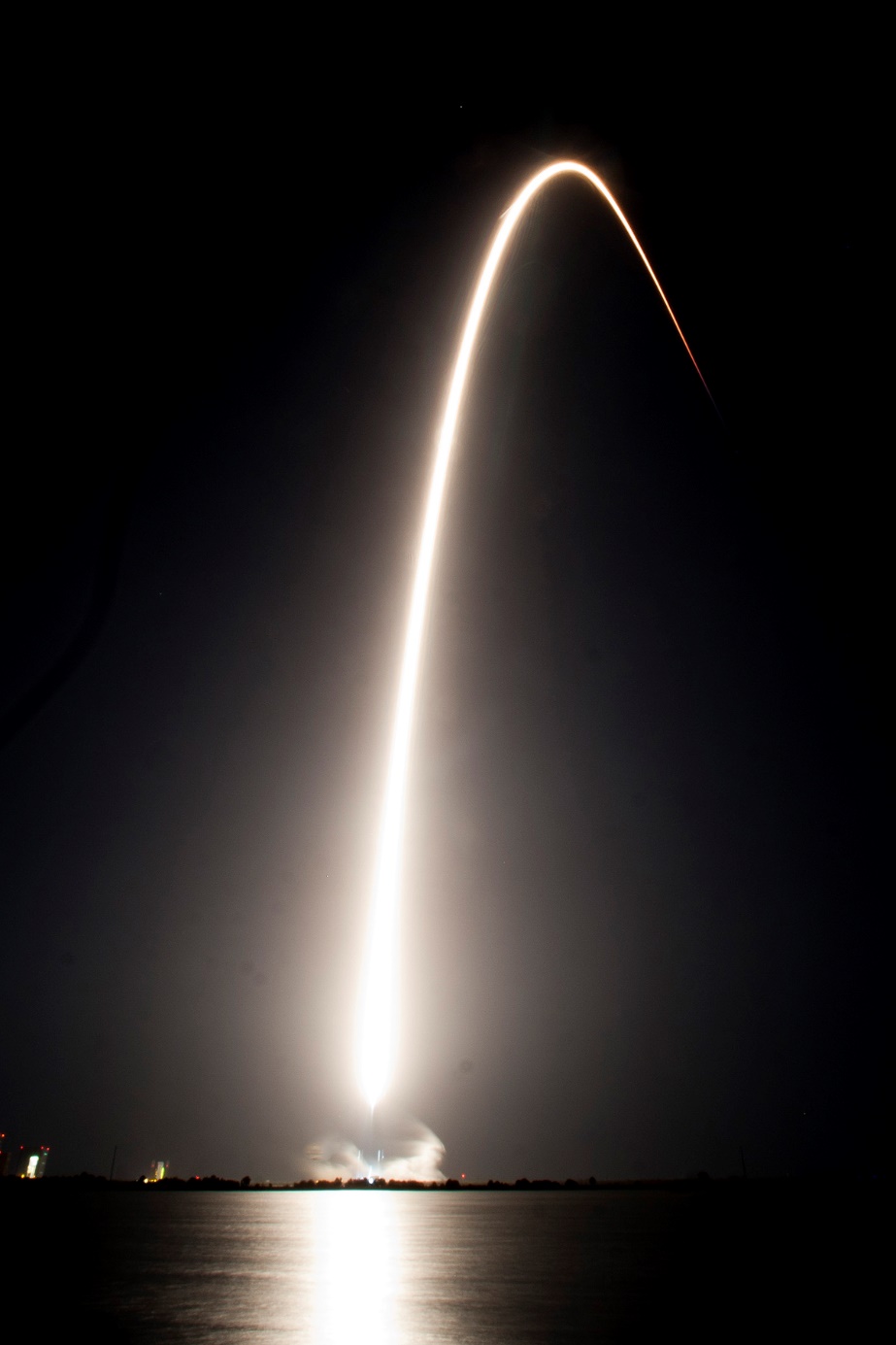
Falcon 9 Starlink V1.0-L24 Streak Shot, Photo Courtesy Carleton Bailie/Spaceline
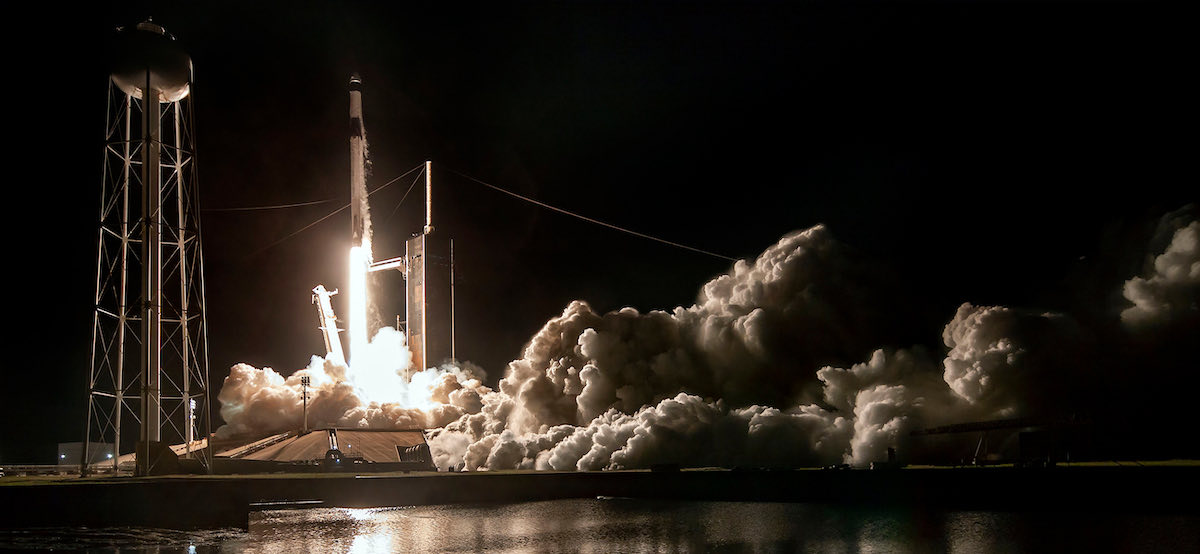
Falcon 9 Crew-2 Launch, Photo Courtesy SpaceX
Falcon 9 Launches Four Astronauts To International Space Station
April 23, 2021 | Reported by Cliff Lethbridge
A SpaceX Falcon 9 rocket successfully launched four astronauts on their way to the International Space Station (ISS) at 5:49 a.m. EDT today from Launch Pad 39A at the Kennedy Space Center. Launch was scheduled for yesterday but was postponed due to bad weather in the emergency abort locations. The mission, designated Crew-2, featured the first astronauts to be flown on both a previously flown first stage booster and a previously flown Crew Dragon space capsule.
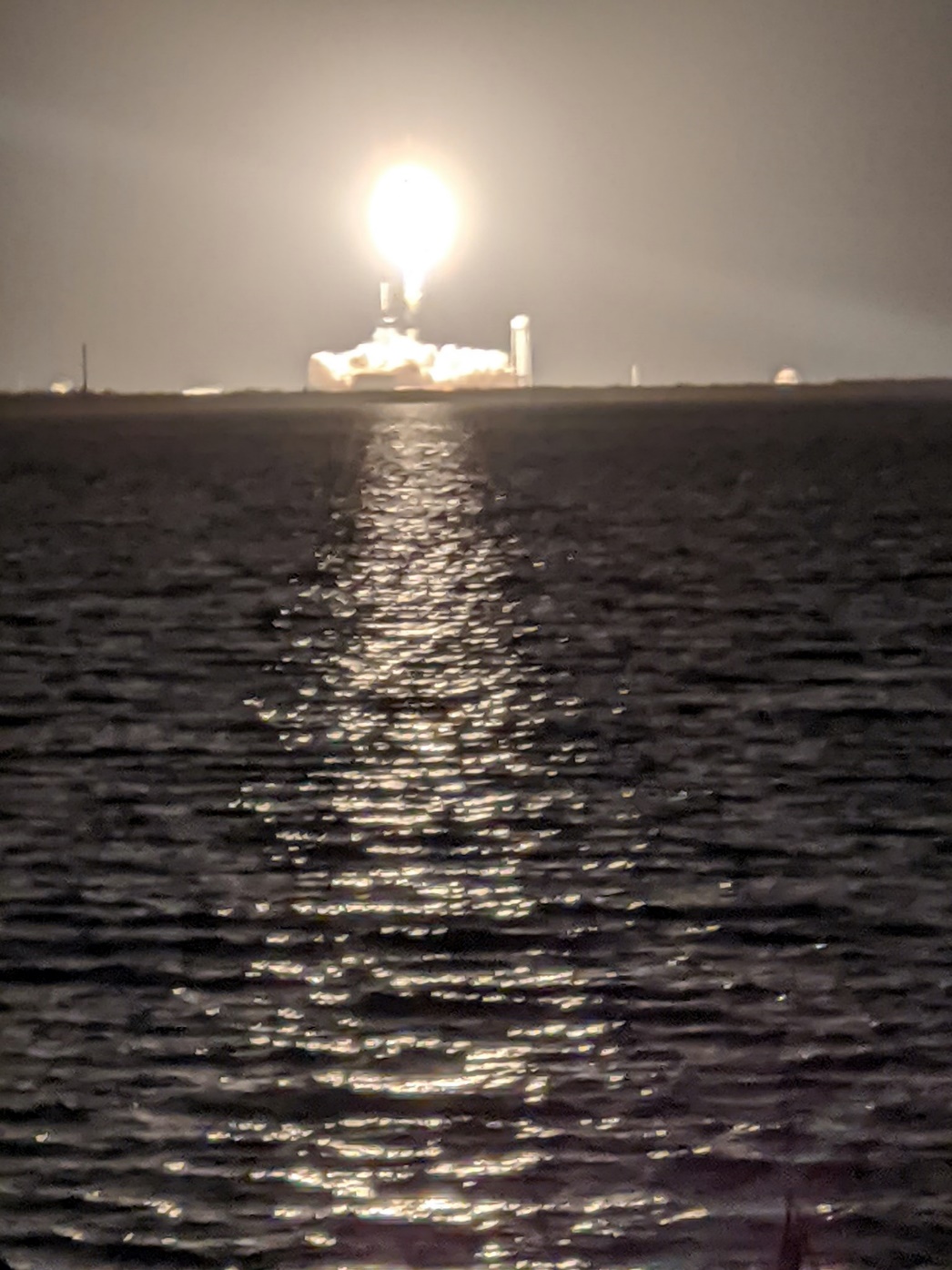
Falcon 9 Crew-2 Launch, Photo Courtesy Cliff Lethbridge/Spaceline
The first stage booster flown today previously supported the Crew-1 manned mission in November, 2020 while the Crew Dragon spacecraft, named "Endeavour", previously carried two astronauts to the International Space Station in the Demo-2 mission in May, 2020. The first stage booster was successfully recovered today with a landing on the "Of Course I Still Love You" drone ship positioned on the Atlantic Ocean several hundred miles off Cape Canaveral.
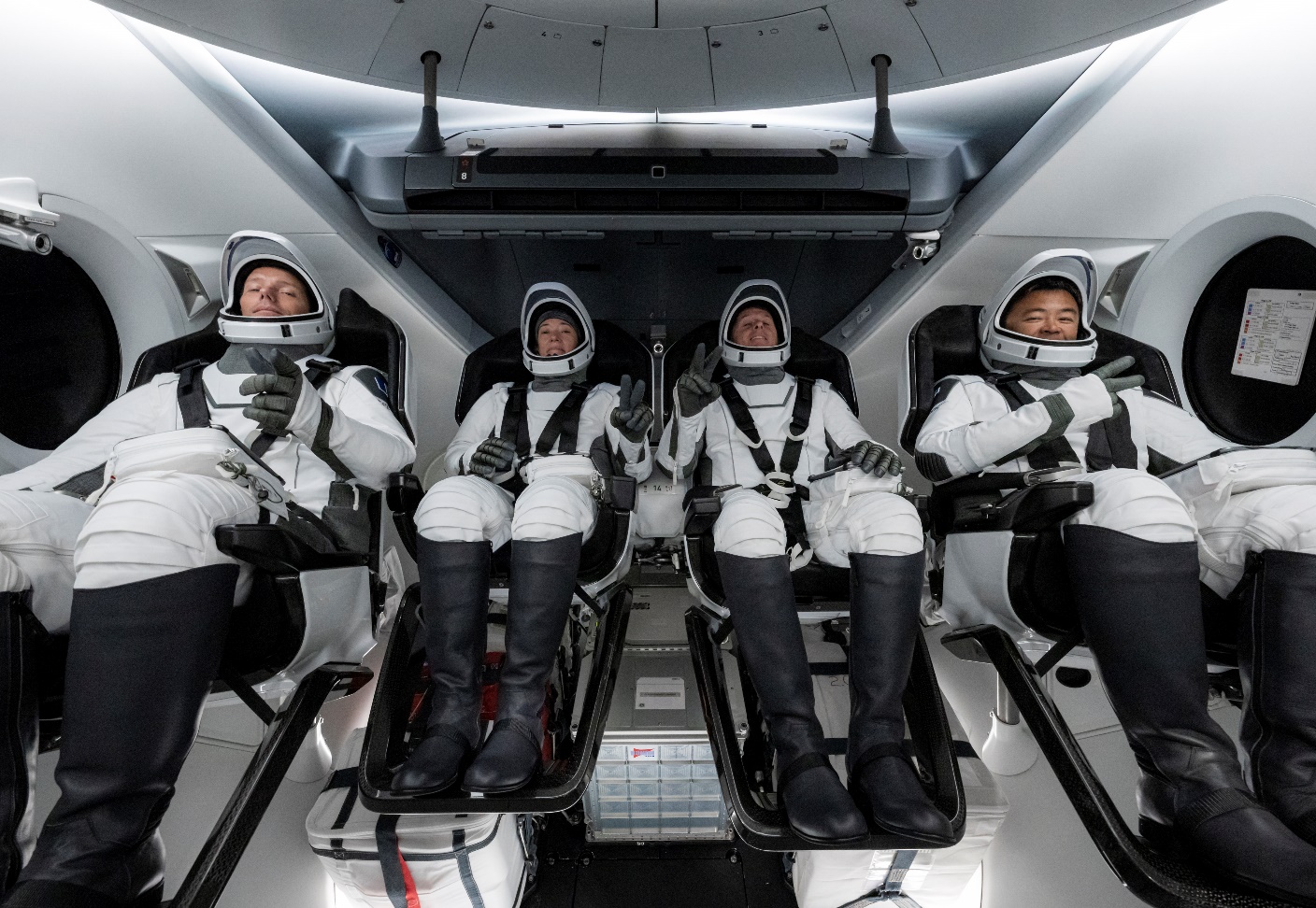
Crew-2 Astronauts Aboard Endeavour, Photo Courtesy SpaceX
As a part of the Commercial Crew Program partnership between NASA and SpaceX, NASA astronauts Shane Kimbrough and Megan McArthur, Japanese Aerospace Exploration Agency (JAXA) astronaut Akihiko Hoshide and European Space Agency (ESA) astronaut Thomas Pesquet were launched on the Crew-2 mission. The Crew Dragon capsule, which separated from the Falcon 9 second stage about 14 minutes after launch, is set to dock with ISS on Saturday, April 24, 2021 at approximately 5:09 a.m. EDT. The spacecraft will autonomously dock with ISS, but the crew can take manual control in case of an anomaly. This will also provide another "first", the first time that two Crew Dragon spacecraft will be docked to ISS at the same time.
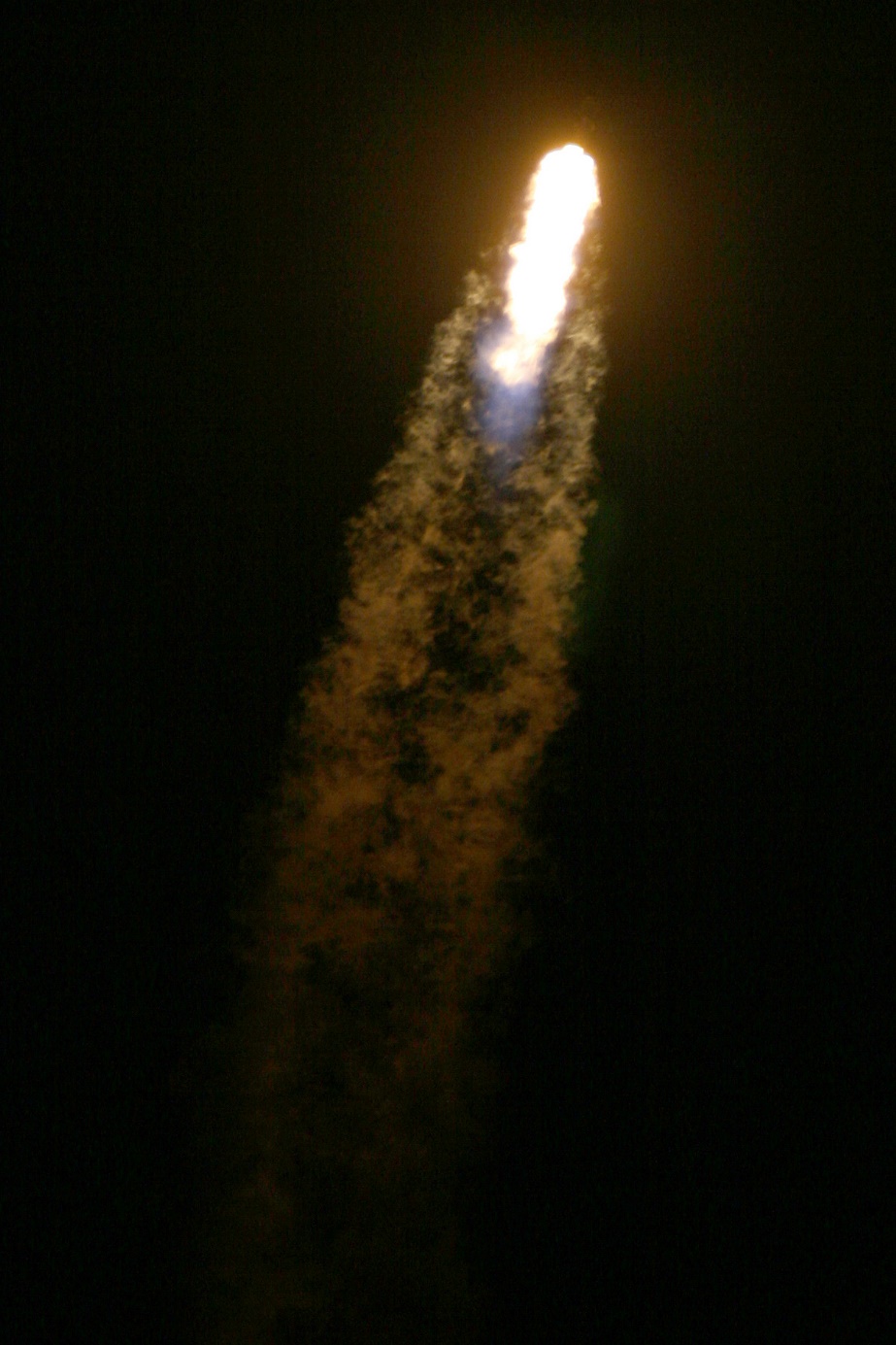
Falcon 9 Crew-2 Downrange, Photo Courtesy Carleton Bailie/Spaceline
The Crew-2 astronauts are scheduled to spend about six months aboard ISS, at which time they will return to Earth on the same spacecraft on which they arrived. Today's pre-dawn launch was spectacular and visible for hundreds of miles. In a very rare event about five minutes after launch, a combination of atmospheric conditions, lighting and movement produced a "jellyfish phenomenon" which lasted almost two minutes. The falling first stage booster appeared to dance like a jellyfish as it descended through the atmosphere. Cape veteran J.B. Kump caught a wonderful video glimpse of this event and it is posted on youtube. You may see it here at https://www.youtube.com/watch?v=1PfbA72mkhw.
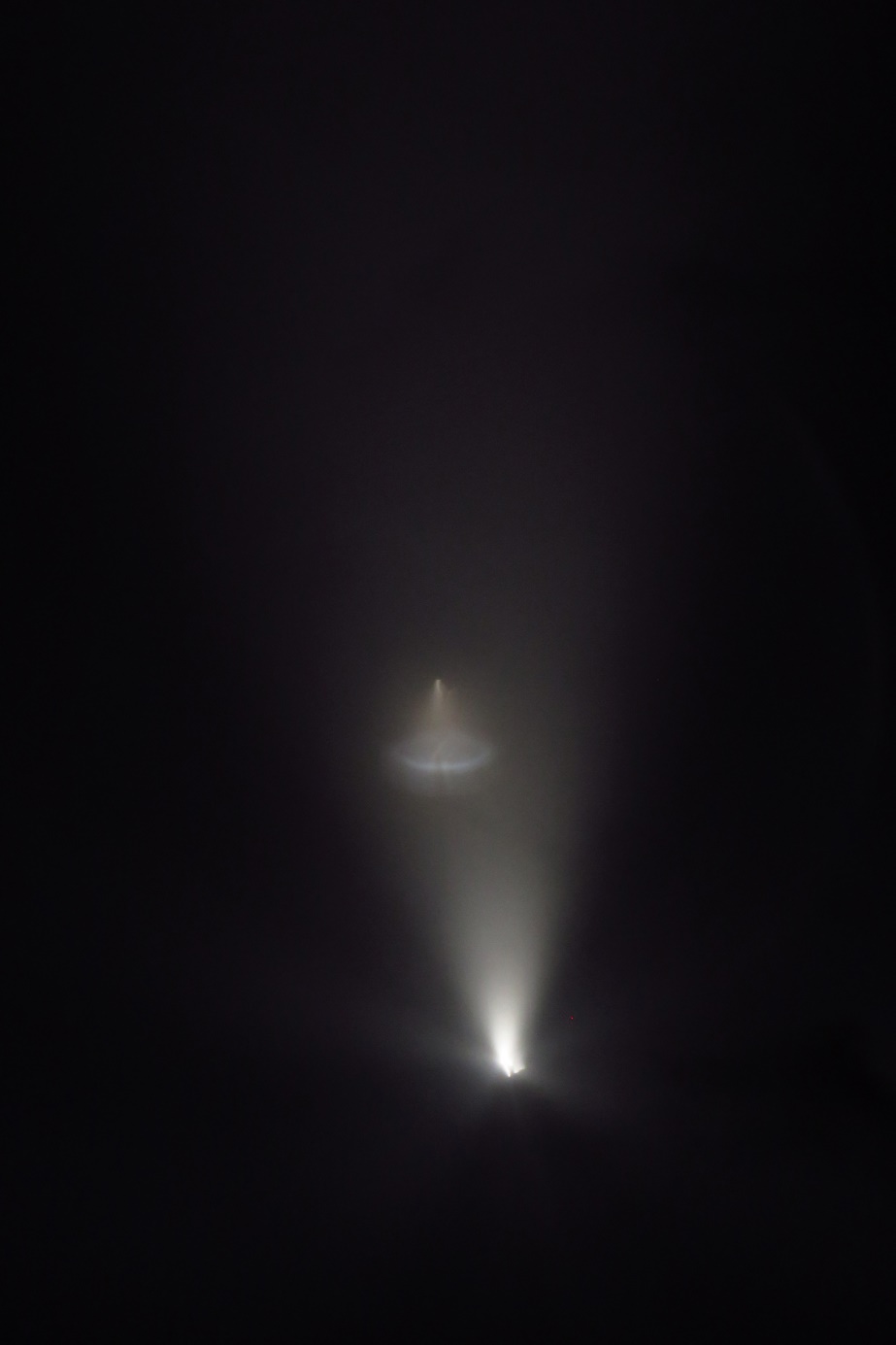
Falcon 9 Crew-2 Jellyfish Phenomenon, Photo Courtesy Carleton Bailie/Spaceline
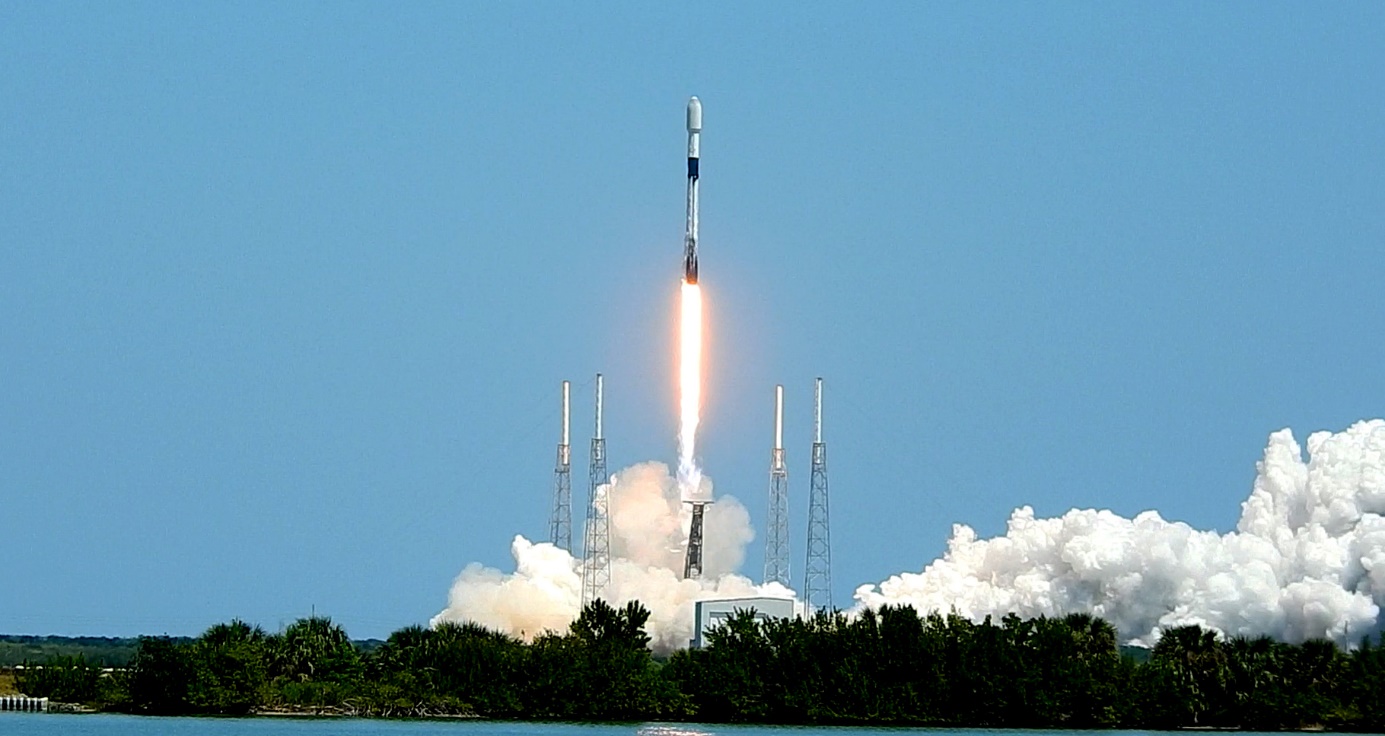
Falcon 9 Starlink V1.0-L23 Launch, Photo Courtesy Liz Allen/Spaceline
Falcon 9 Launches 60 More Starlink Satellites
April xx, 2021 | Reported by Cliff Lethbridge
In the first daytime launch since January 24, 2021 a SpaceX Falcon 9 rocket successfully launched 60 Starlink satellites at 12:34 p.m. EDT today from Launch Pad 40 on Cape Canaveral Space Force Station. The mission, designated V1.0-L23, was the 24th dedicated launch of Starlink satellites, bringing the total number launched to 1,445 although not all of these are still in orbit. The satellites were successfully deployed about an hour after launch. The first stage booster employed today was being flown for the seventh time, having previously supported the Crew Dragon Demo-2 mission, the ANASIS-II mission, the CRS-21 mission, the Transporter-1 mission and two Starlink missions.
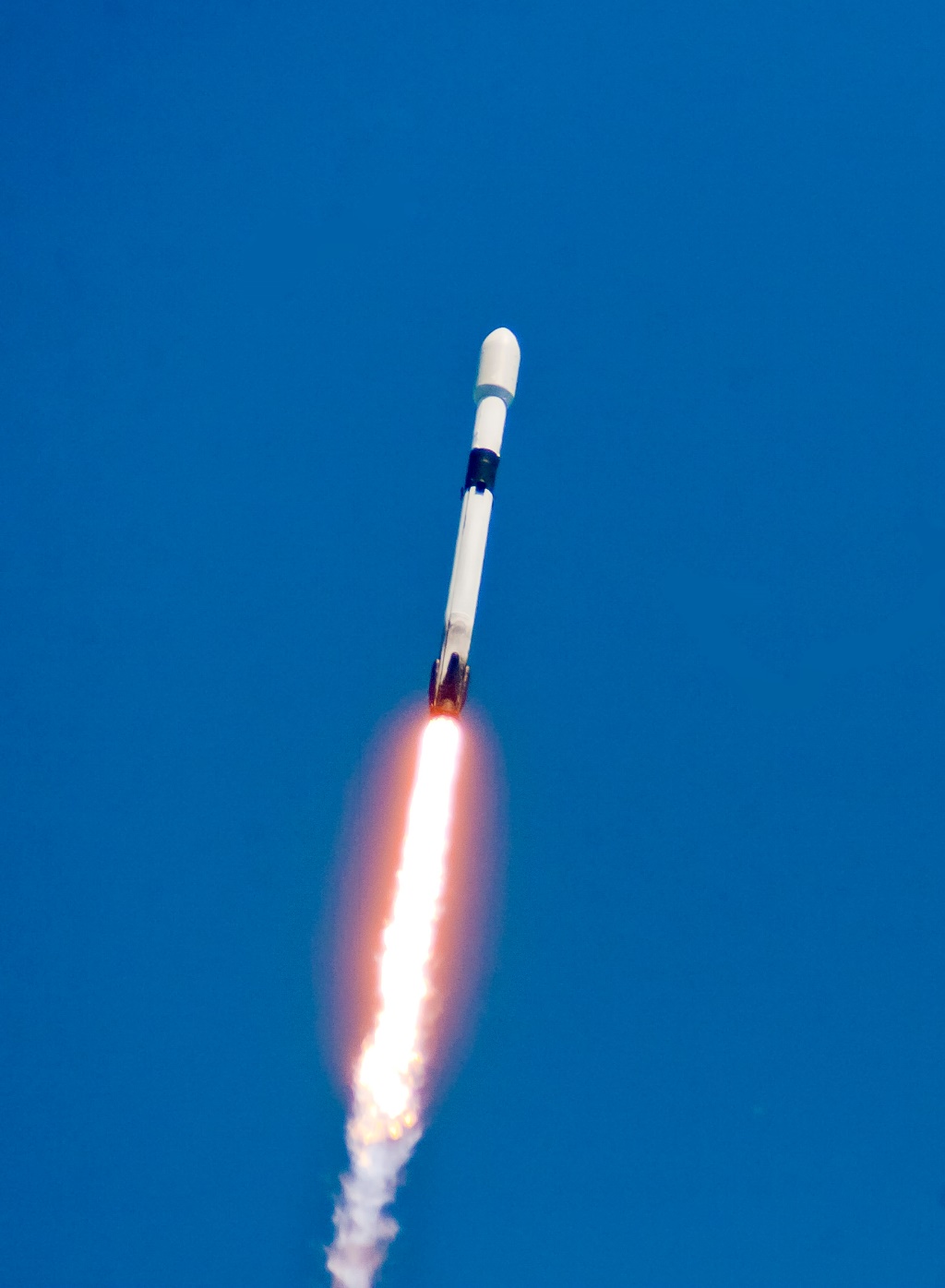
Falcon 9 Starlink V1.0-L23 In Flight, Photo Courtesy Liz Allen/Spaceline
The booster was successfully recovered today with a landing on the "Of Course I Still Love You" drone ship positioned on the Atlantic Ocean about 400 miles northeast of Cape Canaveral. The payload fairing halves employed today have also flown before, one having supported the AMOS-17 and two Starlink missions and one having supported one Starlink mission. The payload fairing halves were also successfully recovered after parachuting to the Atlantic Ocean. Starlink is a SpaceX-owned broadband Internet service currently being tested in select portions of the world. The Starlink constellation is intended to provide space-based Internet service to unserved or underserved areas, or as an alternative to traditional Internet service providers.
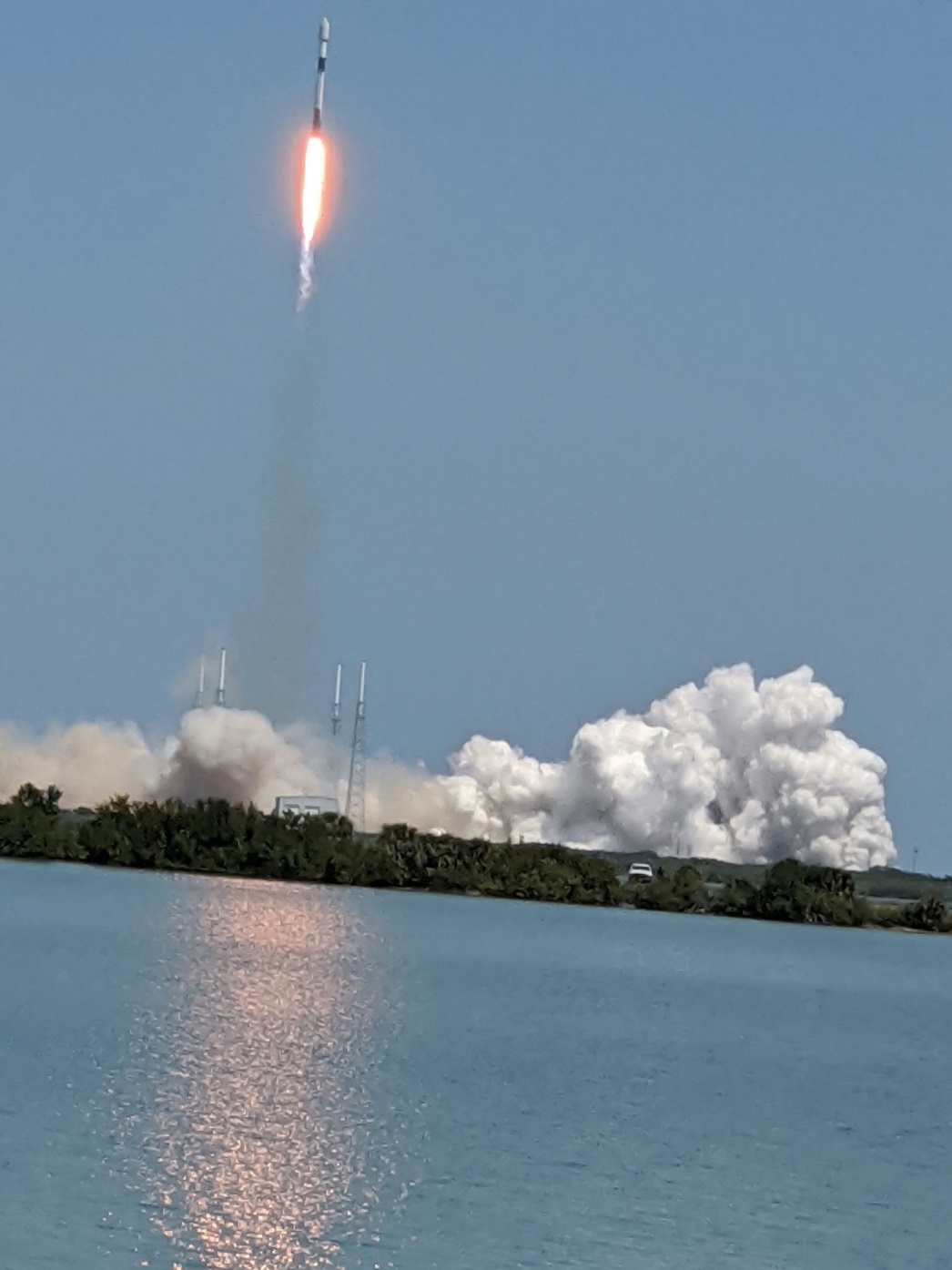
Falcon 9 Starlink V1.0-L23 Launch, Photo Courtesy Cliff Lethbridge/Spaceline







